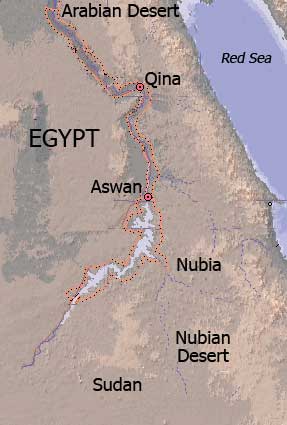Ababdah Hamitic tribal peoples of Upper Egypt and the Anglo-Egyptian Sudan, dwelling in the region between the Nile and the Red Sea, in the vicinity of Aswan in Egypt. This territory lies in the Arabian Desert south of the river town of Quena and Nubian Desert. This name refers to several such African tribes.

Ababdeh
Some of them penetrated areas of Upper Egypt, where they earned a subsistence through transportation of merchandise on their camels. They traded chiefly in senna, and in charcoal made of acacia wood. Burckhardt regarded them as Arabs; Carl Ritter conjectured that they are descended from the people known, under the Roman emperors, as Blemmeyes (also Beja); but R?ppell was of the opinion that they are a branch of the Ethiopian ethnic group established at Mero?. In 1768, the explorer James Bruce acted as physician to the tribe's sheik. In their manner and customs (as of 1851), they were similar to the Bedouins.
Pliny, the classical Roman writer referred to them as Gebidei, and cave-dwelling Troglodytes referred to in earlier classical literature were probably Ababdeh. Ababdeh refer to themselves as the "sons of Jinn". A hereditary chief rules them, and they speak a language which is influenced by Arabic and the Nubian dialect called Barabra. Traditional progenitor of the Ababdeh was a Beja Arab called Selman. Dress and habits of the Egyptian fellahin was adapted by the Ababdeh, and many serve as guides for caravans. Ababdeh of the Nubian Desert dwell in villages and support themselves by farming, fishing, gathering wood, charcoal manufacture, and trading. Priniciple foods include grain sorghum and milk, and principle means of transportation are by camel. The Ababdeh live in either natural caves or huts constructed of matted vegetation. During the first and second World War, many Ababdeh tribe members served alongside the allied armies.

No comments:
Post a Comment